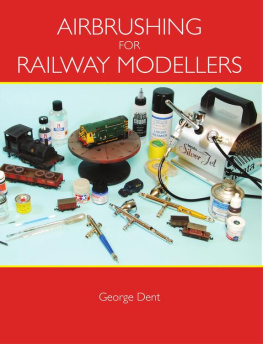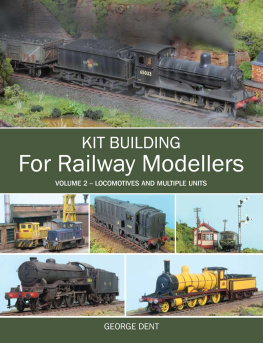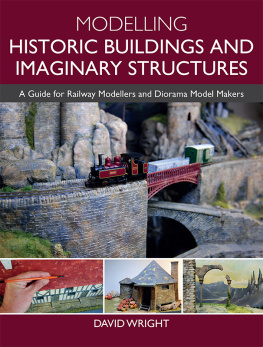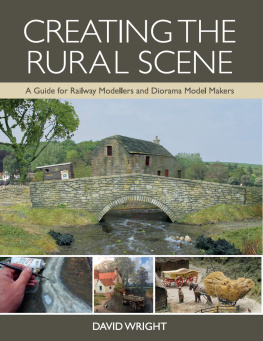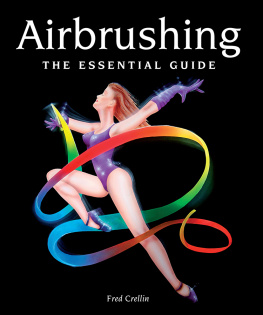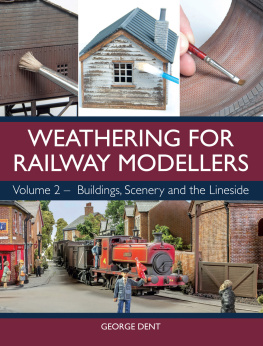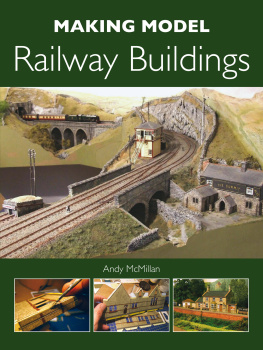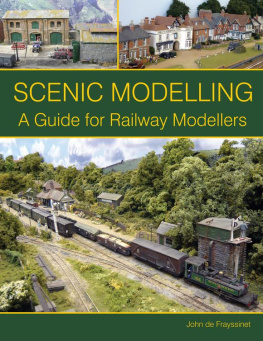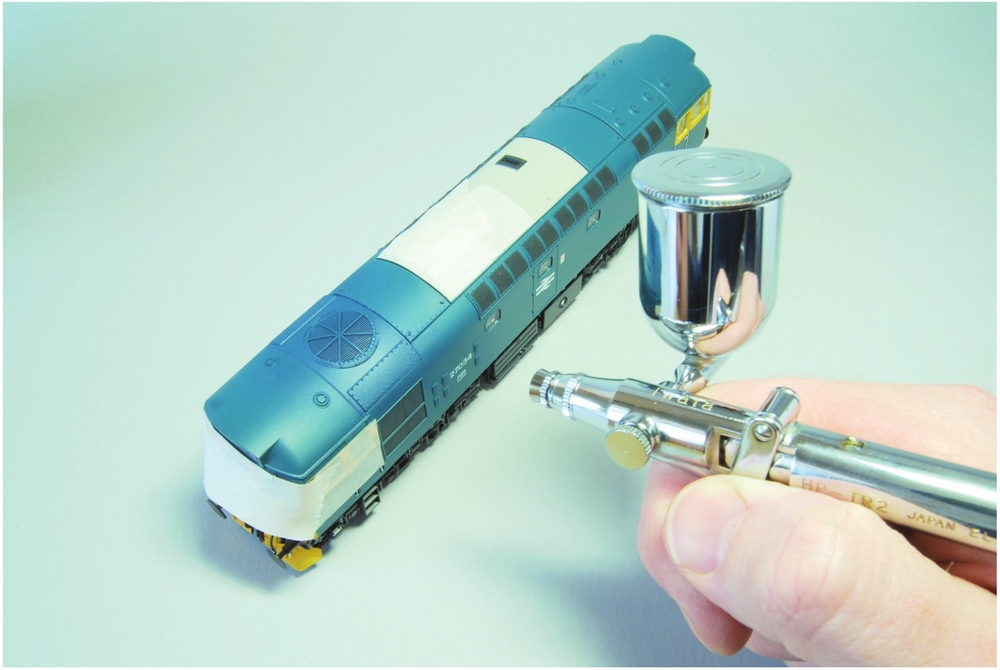Model making, in various forms, has been an important part of my life for nearly thirty years. Having trained and worked variously as a museum conservator, graphic artist and guitar maker, each of these vocations has helped inform my modelling, be it in practical or theoretical terms. In 2004 I became the in-house Model-Maker and Feature Writer for Model Rail magazine and my work has also appeared in Railway Modeller and the two volumes of Detailing and Modifying Ready-to-Run Locomotives in OO Gauge (The Crowood Press, 2009).
Being a professional modeller has afforded me the luxury of access to a broad range of airbrushes, paints and equipment and it is the aim of this book to not only pass on the benefits of my experiences good and bad but also to remove the lingering mystique that surrounds the art of airbrushing. Experienced airbrush users should also find plenty here, including an array of helpful tips and tricks that Ive learned over the years. In addition, a variety of advanced techniques are covered, all of which can combine to help you achieve highly realistic results.
Many of the products and materials featured in this book have been generously provided by the following: Alex Medwell and Lisa Munro (The Airbrush Company), Dennis Lovett (Bachmann) and Robin Carpenter (Cammett Ltd). Thanks also to Charlie Petty (DC Kits), Arran Aird (C-Rail), Dave Young (Ten Commandments), plus David and Ron at SMTF model shop, Poynton.
Ben Jones, Chris Leigh and Richard Foster at Model Rail have been very supportive of my various book ventures, to which I am grateful. Thanks also to the staff at The Crowood Press and Nick Brodrick of Steam Railway magazine.
Jeanne Carrs cottage in Settle once again proved a good place to write a manuscript and Scriveners Books of Buxton supplied much useful reference material. Special thanks to my equine brothers, Jim and Mikey, plus the staff at Bank Farm and last, but by no means least, to the Dent Collective: Julie-Marie, Maude, Leonard and Hannah.

Airbrushing not only offers the chance to improve our modelling output but is an enjoyable pastime in itself.
The technique of airbrushing remains something of a Dark Art to many modellers, akin to the mysteries of low-temperature soldering or brass rolling. However, successful use of an airbrush is within the reach of any modeller, provided that he or she seeks to gain a basic understanding of the materials and equipment involved. Additionally, a good degree of practice is vital.
Contrary to common belief, airbrushing is not a practice reserved for those with deep pockets. Happily, the cost of both airbrushes and compressors has fallen considerably in recent years and the boom in cheap imported goods has also forced established brands such as Badger and Iwata to bring down their prices in the face of stiff competition. Naturally there will always be a need to pay for precision instruments, which is what a lot of high end airbrushes can be classed as. But these are not always suitable purchases for an occasional hobbyist and the introductory chapters aim to help you choose spraying equipment thats right for your own particular needs.
Given prior knowledge of paint thinning, an understanding of how an airbrush works and access to a source of compressed air even a car tyre anyone can get to grips with airbrushing. It is, after all, just another skill that has to be learnt through practice. Indeed, my own early experience of spraying model trains consisted of using a bargain basement airbrush, given away free with a magazine subscription. Once Id learned how to mix the paint correctly and achieve the right air pressure, the strengths and limitations of the tool soon became clear. From then on, airbrushing proved to be an enjoyable exercise.
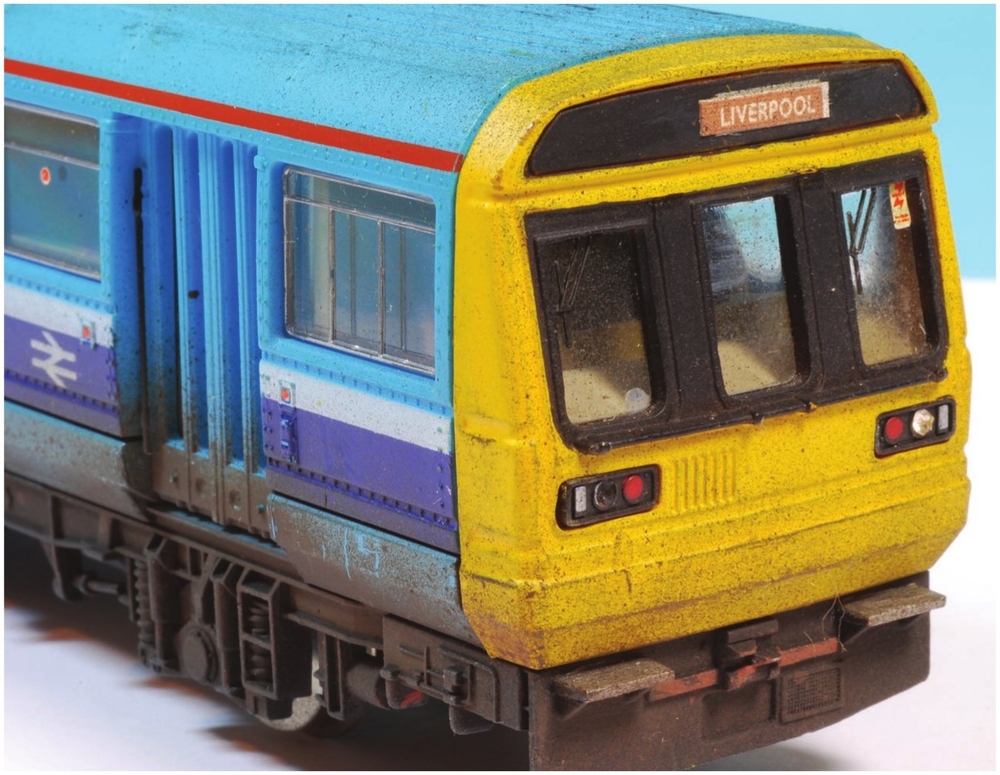
One of my first attempts at airbrush weathering can be seen on this Hornby Pacer. Undertaken way back in 1990, a cheap Humbrol airbrush and canned propellant was used. The overly coarse spray pattern is symptomatic of poorly mixed paint and incorrect air pressure.
WHY USE AN AIRBRUSH?
The benefits of airbrushing can be summed up by the following adjectives:
Speed
Consistency
Quality
Accuracy
Convenience
Uniqueness
Enjoyment
The speed aspect is self-explanatory: even if multiple coats are required for each shade within a complex colour scheme, the rapidness of application will always be attractive, whether youre a hurrying professional or a relaxed hobbyist. When the technique has been mastered, the consistency of paint application from an airbrush is almost impossible to replicate, particularly on miniature models. So much fine detail can be obliterated by too thick a coat of paint, especially where numerous layers have been spread onto the surface.
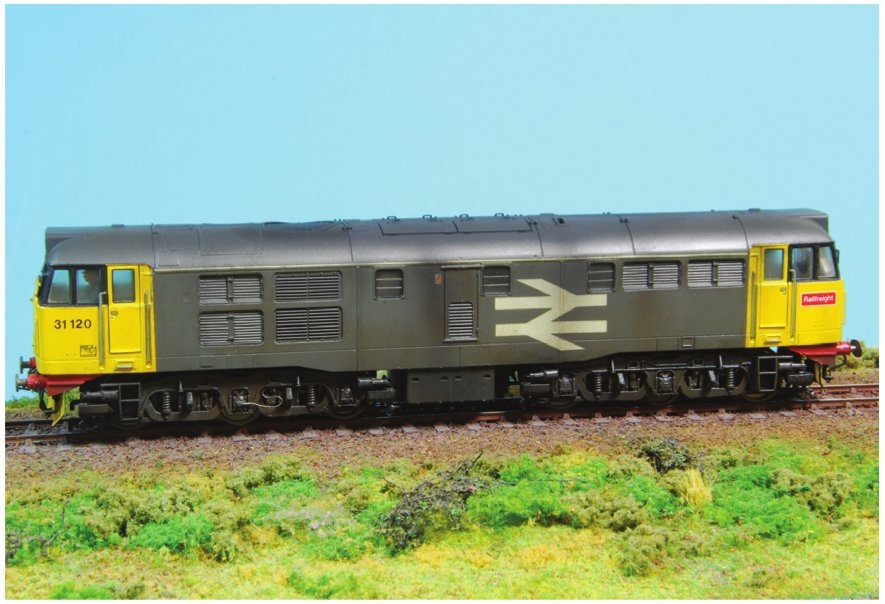
Airbrushing allows models to be customized, enhanced or refinished with a greater degree of consistency. Indeed, even the most practised brush-painter will struggle to match the quality of finish possible with even a budget range airbrush. This OO gauge Class 31 has been repainted and weathered using a mid-priced Badger airbrush and Railmatch enamel paints.
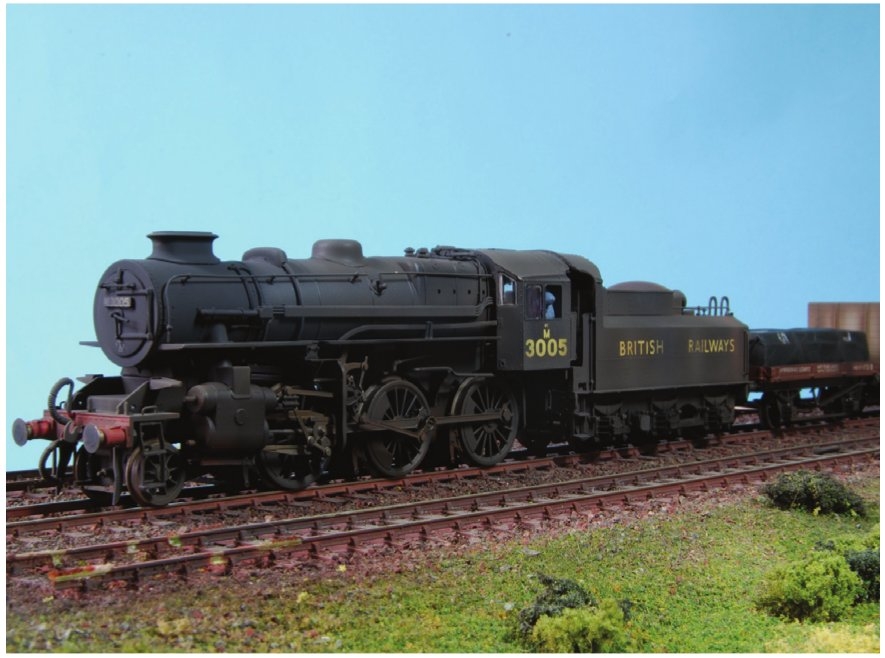
Portraying a grimy steam locomotive can be achieved far more efficiently with an airbrush; with experience, livery and weathering schemes can be undertaken very quickly. Even the need for masking can be dispensed with, as was the case here: the ultra matt finish of the smokebox was sprayed freehand, while subsequent fine layers of dirt-coloured paint blended in the joint with the factory finish.
The quality of finish is also dependent upon the painter knowing what he or she is doing, but the results can be superb, even with only a modest set-up and level of experience. Ditto the accuracy facet, as a well-handled tool can get paint where its meant to be without the invasiveness of a brush. The ease with which an airbrush can be flushed between paints depends to a degree upon the design of the tool but, generally speaking, they are simple to clean.
Certain paints, particularly cellulose, acrylic or metallic finishes, perform at their best when sprayed. Additionally, there are a number of paint effects that can only be achieved by airbrush, such as fogging or misting, where overlapping colours blend gently rather than meeting with a hard edge (see ). Many weathering techniques are also unique to airbrushing, such as exhaust staining or streaking effects.

